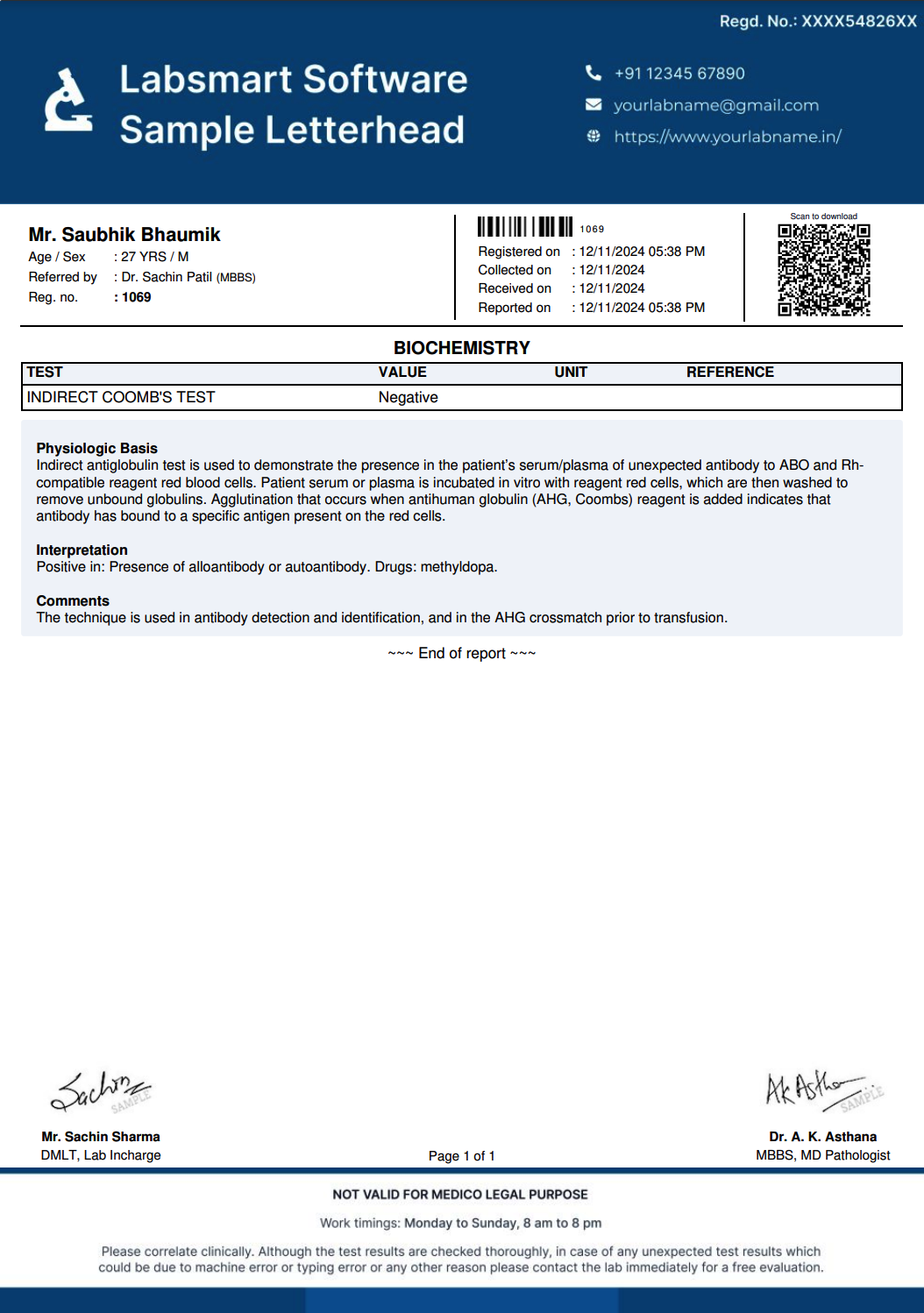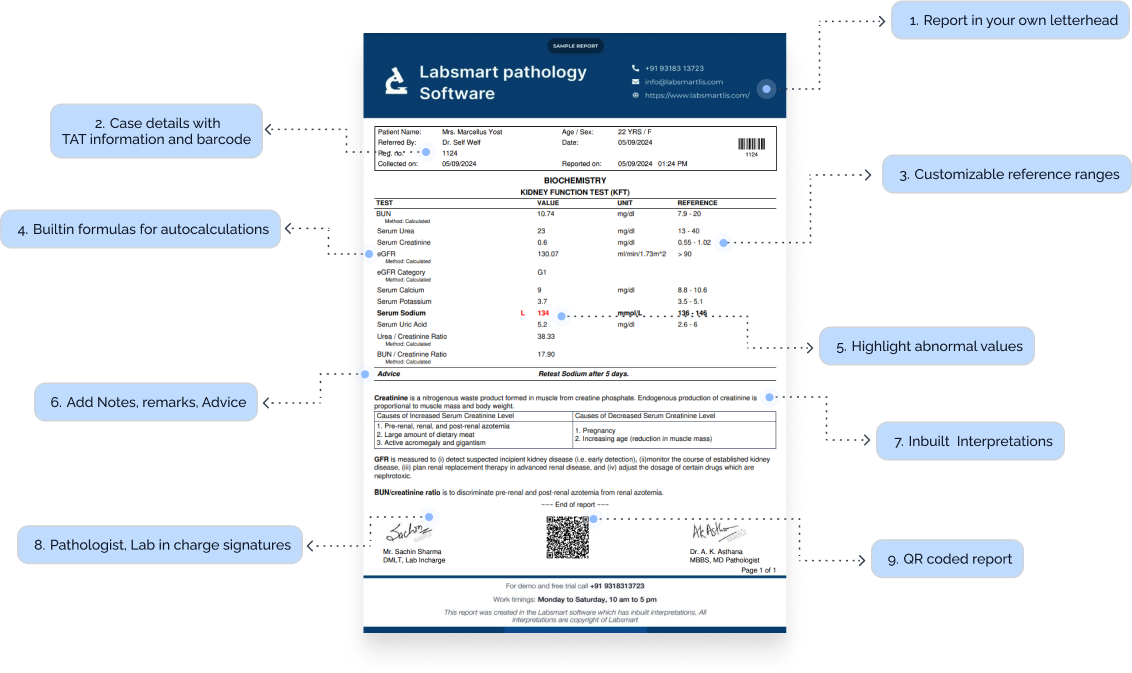What is Indirect Coomb's Test ?
The Indirect Coombs Test, also known as the Indirect Antiglobulin Test (IAT), is used to detect antibodies against red blood cells in the blood serum. This test is especially important in prenatal care and blood transfusions to identify potential incompatibility issues. Unlike the Direct Coombs Test, which checks for antibodies attached to red blood cells, the Indirect Coombs Test identifies free-floating antibodies in the blood that may attack transfused red blood cells or a fetus’s red blood cells. Clinicians may order an Indirect Coombs Test to: Screen for blood compatibility in transfusions: Before a blood transfusion, the Indirect Coombs Test ensures compatibility by detecting antibodies in the recipient's blood that may react with donor blood, helping to prevent adverse transfusion reactions. Assess Rh compatibility in pregnancy: In Rh-negative mothers, this test detects antibodies against Rh-positive blood, which can be crucial for fetal health. If antibodies are found, the fetus is at risk of hemolytic disease, making this screening vital for early intervention. Diagnose hemolytic disease of the newborn (HDN): When an Rh-negative mother has antibodies against her Rh-positive baby’s red blood cells, the Indirect Coombs Test helps monitor and assess the risk of HDN, enabling necessary treatments to protect the baby. Detect unexpected antibodies in pre-surgical patients: Prior to surgery requiring potential blood transfusions, the Indirect Coombs Test helps identify any unexpected antibodies in the patient’s blood that could complicate transfusions. Evaluate autoimmune disorders affecting red blood cells: Sometimes, the Indirect Coombs Test is used to detect antibodies that may be part of an autoimmune disorder, contributing to conditions like autoimmune hemolytic anemia.
Indirect Coomb's Test Report Format: Breakdown
Here’s what an ideal Indirect Coomb's Test report format should include:
Header Information:
- Patient Details: Full name, Age, Gender, and ID.
- TAT information: Timestamp for both sample collection and report generation.
- Doctor's Information: Name of the referral doctor, if applicable.
Test Results Section:
-
Patient's results
As obvious as it is, a test report should definitely have the patient's test result.
Interpretations
Nowadays, most labs prefer to add interpretations to the reports, making the report more patient-friendly. Labsmart software has interpretations of all routine test pre-filled in the software.
Footer Section:
-
Certifications:
Display any relevant accreditations (e.g., NABL, ISO), adding to your lab's credibility.
-
Pathologist and technician signature:
It's mandatory to add a Pathologist and technician signature to the report.
Indirect Coomb's Test Interpretation
In Labsmart software, this is the inbuilt interpretation for Indirect Coomb's Test
Importance of adding interpretation to reports:
It's very helpful to add interpretation in reports as it makes the reports more patient friendly and also helpful to doctors in some cases. Moreover, presently most labs prefer providing reports with interpretation. Thus, adding interpretation to report will help your lab stay at par with other competitor labs.
Labsmart software
(With Interpretation and auto calculations)
- Billing
- Reports with Interpretation
- Auto calculation where needed
- Check daily business
- WhatsApp reports
* Free plan available

1.5 Crore+
Reports printed & delivered online
1250+
Labs Active
10+
Countries
Indirect Coomb's Test MS Word format
Download the Ms word editable Indirect Coomb's Test report format for offline reporting.
Download word format





